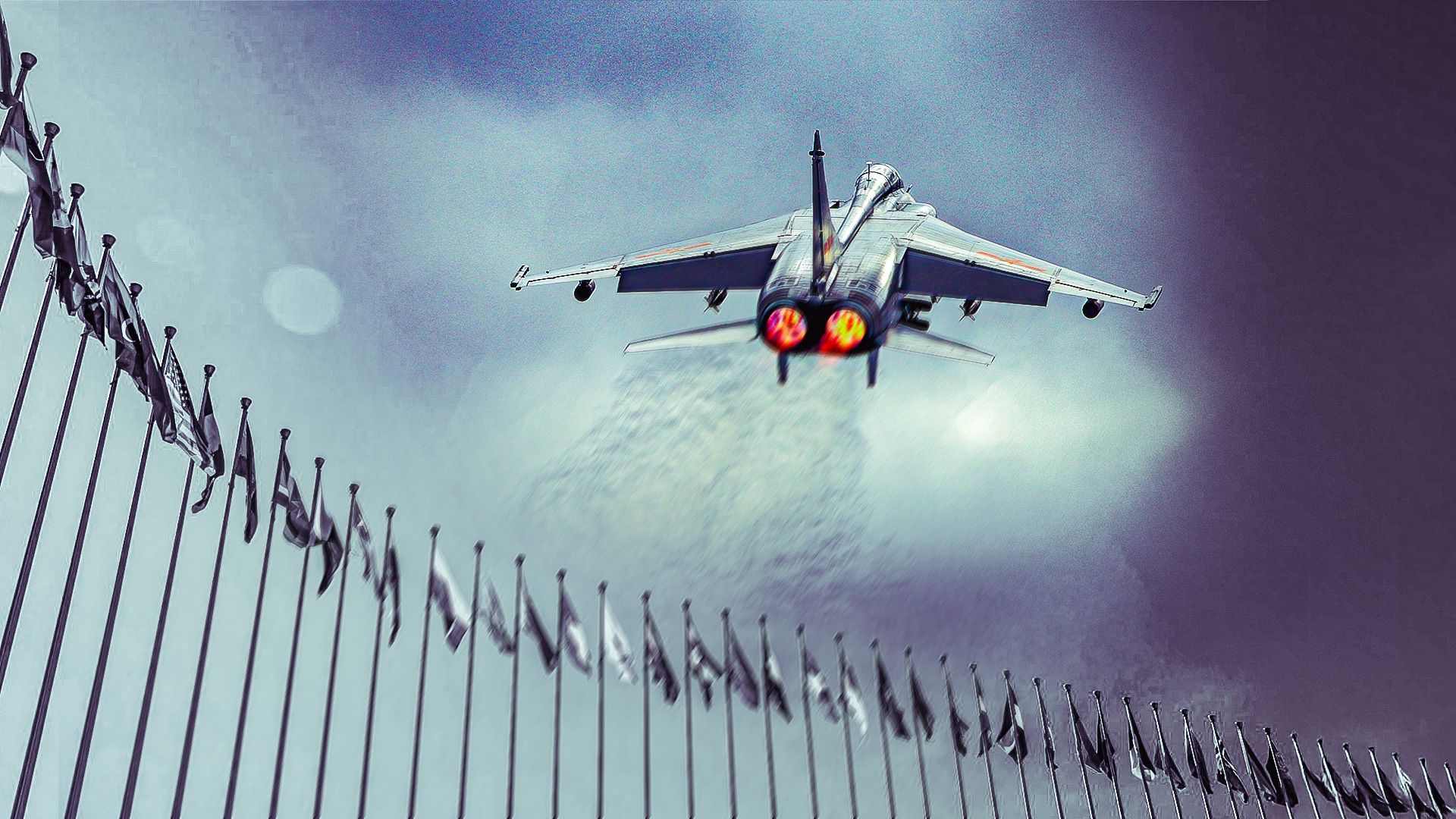Business
China Expands Fighter Jet Exports Amid Declining Russian Sales

As Russia’s fighter jet exports have significantly declined over the past decade, China is increasingly positioned to fill the gap in the global market for military aircraft. This shift has allowed China not only to reclaim its historical role as an alternative supplier for anti-Western nations but also to venture into markets previously dominated by Russian aircraft.
During the Cold War, particularly following the Sino-Soviet split, China emerged as a viable option for countries that were wary of Western influence and had strained relations with the Soviet Union. In those years, Chinese fighter jet exports primarily consisted of older models, which were often viewed as inferior copies of Soviet designs. Notable examples include the Chengdu J-7, a replica of the MiG-21 Fishbed.
Today, however, China’s offerings have evolved. Advanced jets such as the J-10C Vigorous Dragon and the forthcoming J-35 fifth-generation fighter represent a significant upgrade, providing potential buyers with modern capabilities that rival Western and Russian aircraft.
Countries Operating Older Chinese Fighter Jets
Many nations, often constrained by budget, continue to operate older models of Chinese fighter jets. These include the Shenyang F-5, a copy of the Soviet MiG-17, the Shenyang J-6, and the Chengdu J-7. Notably, all three aircraft types are utilized by the North Korean Air Force. The F-5, which first entered service in 1952, exemplifies the age of some of these aircraft.
The Shenyang J-6 is in service with Myanmar, North Korea, Pakistan, Sudan, Tanzania, and Zambia. The J-7’s production continued until 2013, with the last units delivered to Bangladesh. It remains operational in countries across Africa, including Nigeria, Sudan, and Zimbabwe, as well as Iran and Pakistan. While many of these nations do not currently engage in purchasing new Chinese fighter jets, the trend is shifting as more countries consider China for advanced military aviation solutions.
The Special Case of Pakistan
Pakistan stands out as a significant player in China’s fighter jet exports. Historically reliant on United States aircraft, particularly the F-16 Fighting Falcon, Pakistan has shifted its focus towards Chinese offerings. Currently, it is the sole export operator of the Chengdu J-10, with approximately 20 units in service and an additional 16 on order.
The J-10 serves as an analogue to the American F-16, and its development is believed to have been influenced by earlier designs, including technology from Israel’s IAI Lavi fighter. Notably, China has collaborated with Pakistan to create the JF-17 Thunder, a low-cost, lightweight fighter jet. This collaboration has extended beyond Pakistan; the JF-17 has also been sold to Azerbaijan, Myanmar, and Nigeria.
There have been reports suggesting that Pakistan could become the first export customer for the J-35, though the nation has denied these rumors. Nonetheless, China’s commitment to developing military jet engines and enhancing fighter jet capabilities indicates a promising future for its export market.
Current Trends and Future Prospects
China’s fighter jet exports are not limited to high-performance models. Demand also exists for advanced trainers that can double as light fighters. The Hongdu JL-8, co-developed with Pakistan, serves this purpose. Exported to countries such as Angola, Egypt, and Myanmar, it fills a crucial role for nations requiring basic air combat capabilities.
Countries like Egypt and Venezuela currently do not operate Chinese frontline fighters, relying instead on American and Russian jets. However, some nations, including Indonesia and Iran, are exploring negotiations for Chinese jets. In July 2025, reports emerged that Indonesia was considering the J-10, while Iran was reportedly in active discussions to acquire the J-10C.
Despite the growing interest, significant barriers remain. Countries such as India and Vietnam are unlikely to engage in purchases due to political tensions and historical mistrust. Meanwhile, nations in the Asia-Pacific region, including South Korea, Japan, and Australia, generally avoid considering Chinese fighters for their air forces.
According to a 2024 report from SPIRI on global arms exports, the United States leads in combat aircraft exports, with 996 units on order, followed by France and South Korea. China’s current figure stands at 57, indicating that while there is potential for growth, the country’s fighter jet exports remain limited.
As demand for advanced military aircraft continues to rise and Russia’s export capabilities diminish, China’s fighter jet market may be poised for significant expansion. The success of the J-35, which has entered mass production, could further enhance China’s position in the global arms market.
-

 Health2 months ago
Health2 months agoNeurologist Warns Excessive Use of Supplements Can Harm Brain
-

 Health3 months ago
Health3 months agoFiona Phillips’ Husband Shares Heartfelt Update on Her Alzheimer’s Journey
-

 Science3 weeks ago
Science3 weeks agoBrian Cox Addresses Claims of Alien Probe in 3I/ATLAS Discovery
-

 Science3 weeks ago
Science3 weeks agoNASA Investigates Unusual Comet 3I/ATLAS; New Findings Emerge
-

 Science3 weeks ago
Science3 weeks agoScientists Examine 3I/ATLAS: Alien Artifact or Cosmic Oddity?
-

 Science2 weeks ago
Science2 weeks agoNASA Investigates Speedy Object 3I/ATLAS, Sparking Speculation
-

 Entertainment4 months ago
Entertainment4 months agoKerry Katona Discusses Future Baby Plans and Brian McFadden’s Wedding
-

 World2 months ago
World2 months agoCole Palmer’s Cryptic Message to Kobbie Mainoo Following Loan Talks
-

 Entertainment3 months ago
Entertainment3 months agoEmmerdale Faces Tension as Dylan and April’s Lives Hang in the Balance
-

 Science2 weeks ago
Science2 weeks agoNASA Scientists Explore Origins of 3I/ATLAS, a Fast-Moving Visitor
-

 Entertainment4 months ago
Entertainment4 months agoLove Island Star Toni Laite’s Mother Expresses Disappointment Over Coupling Decision
-

 Entertainment3 months ago
Entertainment3 months agoMajor Cast Changes at Coronation Street: Exits and Returns in 2025









